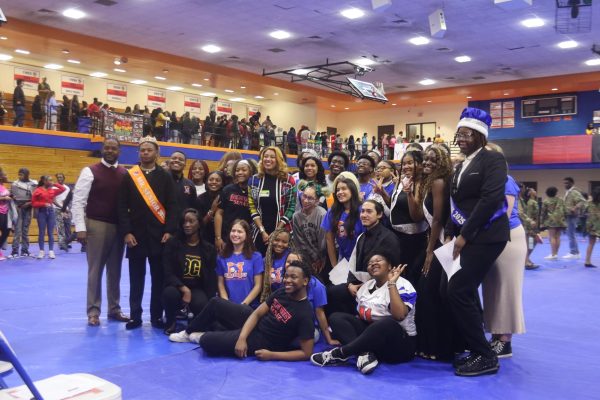Bleeding the Pages Yellow – The Question of Fake News
It’s in the air and everywhere– fake news is the hottest buzzword of our generation. But what is fake news? The university of Penn State defines it as intentionally fabricated information, spreading deceptive content, or grossly distort actual news reports.
“I think there’s definitely fake news out there,” Kate Keim, senior, said. “Some people [who say there’s fake news], yeah, but other people who say it’s out there everywhere all the time, not necessarily, but I’d say there’s probably some out there at a given time.” Keim also goes on about how fake news is ‘news released with the knowing intention that it’s a falsehood.’ And she’s not wrong either.
According to explained ramblings, the top preforming fake news sites got 46% percent of shares on facebook. As the world of politics becomes more and more complicated, fake news is coming more and more prominent with plenty of people becoming more worried about the future of journalism.
“What I see in the news, it seems to solely focus on negativity,” Keim said. “There isn’t a lot of focusing on the positive, so I feel like it’s skewed to focus on the negative.” She also goes on to state that ‘there’s no such thing as true detachment from a subject. With that being said, it’s impossible to have fully unbiased journalism.’
Even so, fake news continues to be a prevalent part of our society. However, it’s mostly restrained to that of clickbait. While fake news is certainly something to be cautious of, it’s more likely to come in the form of clickbait of some kind, usually with the intention of misinforming the reader.
If you’re ever suspicious of what is and what is not fake news, be sure to ask three questions:
- Who is the creator?
Make sure to check whoever posted the news report. If the URL ends in .com or .net, it’s likely not credible. The site should also have an ‘about us’ link or ‘about m’ section.
Sites with ‘~’s’ are usually personal sites.
- What is the message?
Make sure you’re able to check that multiple other sources are reporting on the same story. Also, make sure that the date is current.
Anonymous sources and clear, heavy bias are usually signs of some falsehoods.
- Why was this created?
If you can confirm that the author or site is being paid, or can see that the page has a label saying ‘sponsored content,’ it’s probably a fake.
(source: http://www.prattlibrary.org/research/tools/index.aspx?cat=90&id=4735)
Your donation will support the student journalists of Richland Northeast High School. Your contribution will allow us to attend conferences, purchase equipment and cover our annual website hosting costs.





